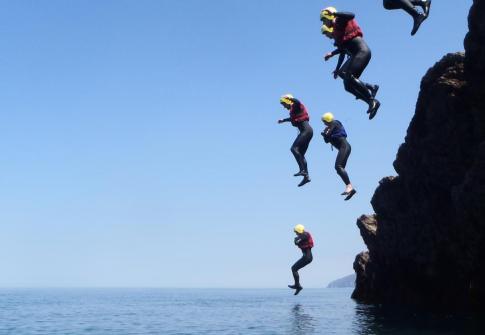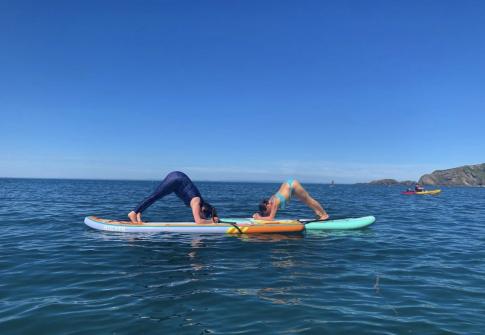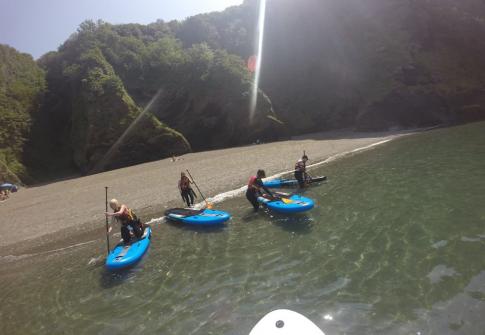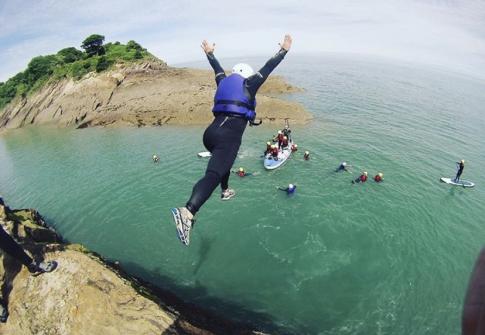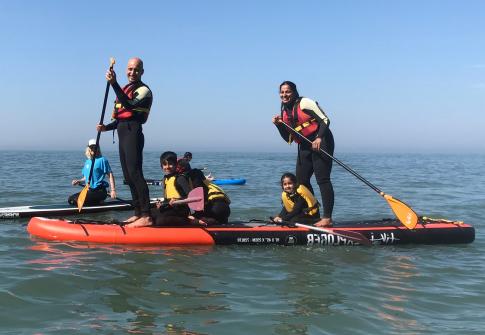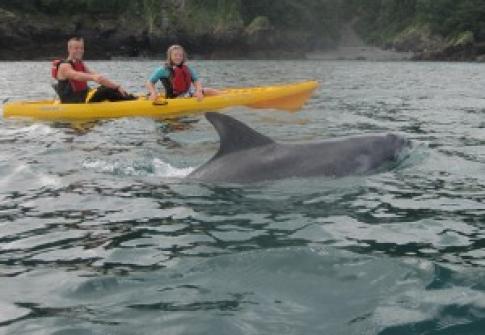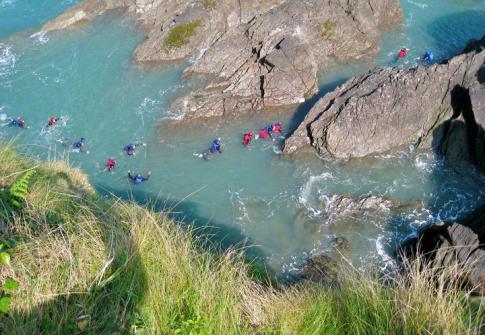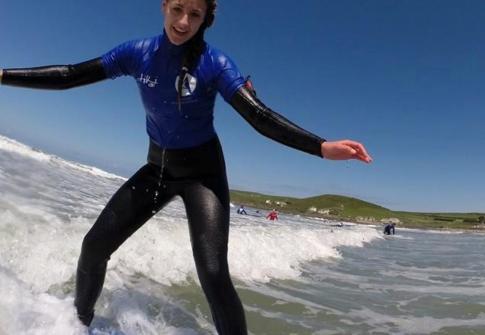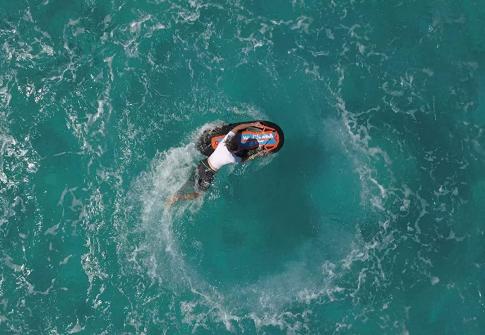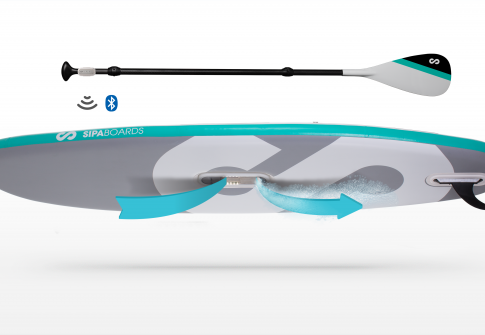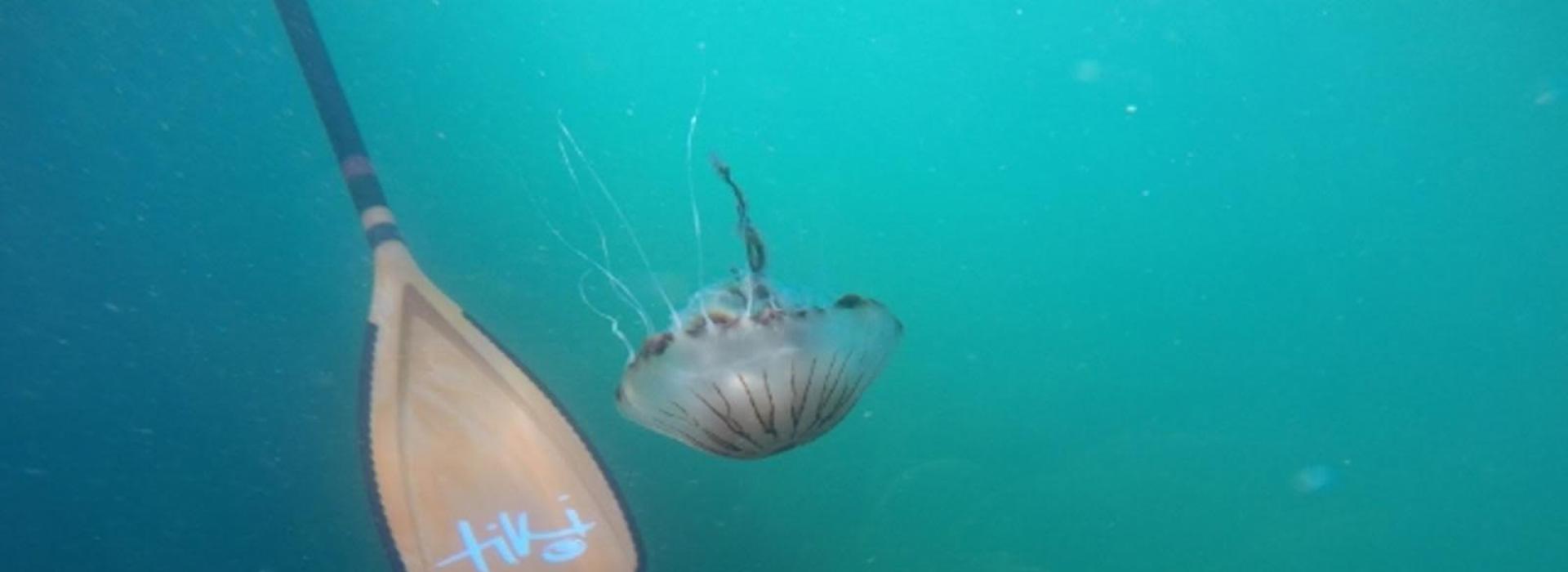
Watermouth Wildlife
The beautifully ruggerd North Devon coastline is the perfect area not only to enjoy your adrenalin filled water sports activities with Active Escape but is also a great opportunity to keep your eyes peeled for some of our majestic marine life.
So what kind of marine mammals do we have lurking around the area?
A good indicator for dolphins are birds – if you see them dive-bombing it usually means there are fish about, and where there are fish there are usually hungry dolphins not too far away!
The type of dolphins you are most likely to see around here are either the common dolphin – which usually range from about 1.6 – 2.5 meters long or the bottlenose dolphin which can be up to 4 meters long! Crazy!
We often see them playing in the channel near our coasteering jumps – so remember to keep those eyes peeled when you are out there. They also find our paddle boards very interesting and we have had a few up close visits from them.
We also have a few shy seals which often poke their heads up to watch some jumps before heading off to find something tasty to eat.
If you come between the months of June – July you are more than likely going to see quite a few of our squishy jelly fish friends floating around minding their own business.
We have a few different types of jellyfish here, the most common in these months would be the moon jellyfish. They are identified by their four white rings – the sting is not powerful enough to penetrate the skin meaning you can hold them in your hand.
The second most common jellyfish here is the compass jellyfish – they are a brown colour and have a sting that feels similar to that of a nettle.
We also have blue jellyfish that have a more intense sting so we would advise to stay away from these ones!
The other most common jellyfish we have here are the barrel jellyfish which can grow to about 90cm across – they are HUGE! But fear not – they are gentle giants and have a very weak sting.
Remember to be careful out there – jellyfish can breakup during big storms or in waves and the tentacle with a still ‘active’ sting can wash up on the beach, so think before you pick up that funny looking thing on the beach!
We also have many sea birds around such as gulls, oyster catchers, shags and many more!
Make sure if you are to come along on any of our adventures to keep those eyes peeled and tell your instructor so we can let you know if we have any more fun facts about these species – we have lots of interesting stories and information about our little crustacean friends. On the rocks you can look out for crabs, barnacles and sea anemones and so much more!
Book on to one of our activities today to join our free wilderness tour with your highly knowledgably instructor.







